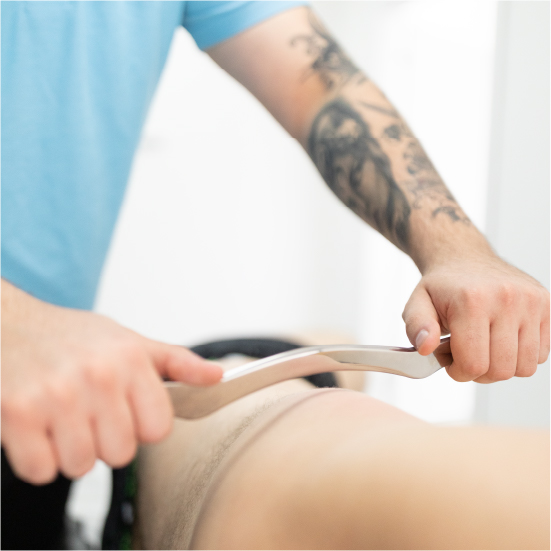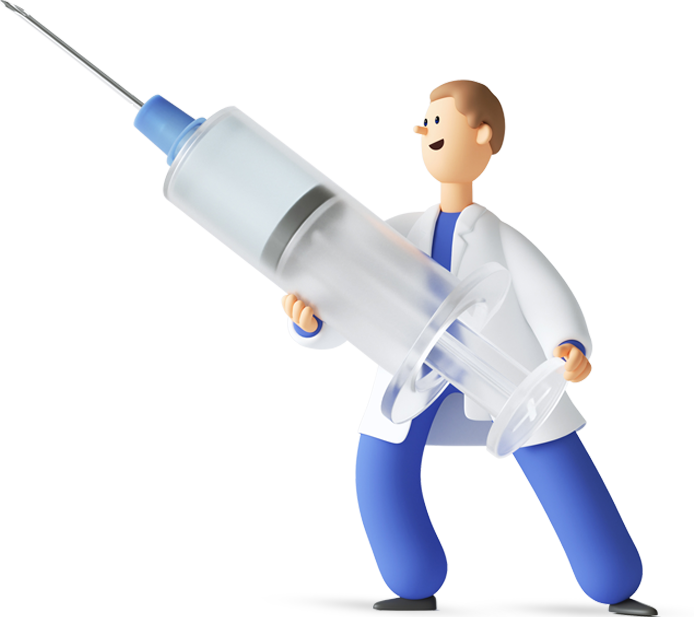

Scraping
Scraping therapy, also known as gua sha, involves using scraping tools of various sizes against areas of muscle dysfunction. This therapy is utilised to break restrictions within the muscles, addressing issues like scar tissue, fascia restrictions, strained muscles, or other muscle-related problems.
How does Scraping work?
Scraping is a treatment technique employing tools to efficiently locate and treat soft tissue tightness and injury. These instruments help break up adhesions and restore normal tissue mobility, similar to other soft tissue mobilisation or deep tissue massage methods. Typically used in conjunction with soft tissue work, joint mobilisation, and therapeutic exercise, scraping therapy aims to correct musculoskeletal issues that contribute to pain.
Recommended for:
* Muscle Tightness and Tension
* Sports Injuries
* Chronic Pain
* Tennis elbows
* Rehabilitation after Surgery
* Athletic Performance Enhancement
Pricing
£5 as an addition to massage
Duration
5-10 mins
Benefits
* Pain reduction
* Helps to Reduce Swelling
* Increases Circulation
* Increasing range of motion
* Removing tissue adhesions
Exercise Prescription
The primary method we use to rehabilitate injuries is precise, individualised exercise prescription which addresses any associated weaknesses or imbalance. We also design our exercise prescriptions to reduce the risk of further injury, and it is recommended not just for rehabilitation but prevention as well. If you have any results out of the normal range we recommend you consult a doctor just to be sure that everything is ok.
Our approach to Rehabilitation at Body Boost Clinic
Rehabilitation provides a vital role in pain relief and recovery from fractures, surgery, age-related conditions and muscle, tendon and ligament injuries. But you don’t have to be injured to benefit from physiotherapy; it’s just as valuable as a preventative measure, and is highly recommended for athletes, physical performers or anyone that struggles with pain in everyday life.

FAQ
Is muscle scraping safe?
Scraping therapy is generally considered safe. For best results, make sure you do not have any contraindications (listed below) and are comfortable with the scraping technique. If you’re not sure if this type of self-treatment is for you, it’s always best to check with a physical therapist. Here are some scenarios when muscle scraping should not be performed:
-
Over active infections, open wounds, malignancies, or tumors
Over unhealed or complex fractures
Pregnancy (consult with your doctor)
Presence of DVT, blood clots, or thrombophlebitis
Uncontrolled high blood pressure
Two of the most common mistakes people make using scraping tools are applying too much pressure and treating an area for too long. Moderate pressure at most is recommended. The weight of the tool and beveled edge does the rest. The recommended amount of time per area is approximately 20-30 seconds, as you monitor the skin for redness (petechiae). If an area is more irritated, redness will appear more quickly.
Does muscle scraping hurt?
Muscle scraping can be uncomfortable if you’re working on an area where you experienced an injury and now have scar tissue. Also, the more the muscle is strained or restricted, the more uncomfortable it can feel. Bear in mind, though, that over time, as you scrape the muscles, the pain should subside significantly. Communication with the practitioner is important, as they can adjust the technique based on your comfort level.
How can Rehabilitation help with pain relief?
A good program involves exercising the injured area and stretching tight muscles, massaging sore spots, and doing exercises that prepare it to withstand stress from exercise, competition, or other situations that could cause injury in the future. During the sports injury rehabilitation process, there are certain techniques that can be used by sports physiotherapists to help promote the healing process of soft tissues.
How does Rehabilitation prevent injury?
Physiotherapy can help deal with injuries by restoring strength and mobility to the affected part of the body. In addition, it can also help prevent future injuries. A physiotherapist can help come up with a plan to prevent future injuries for athletes or people who do daily exercises or any other physical activities. They will examine your lifestyle, medical history, or any previous injuries to come up with a plan for you.
A physiotherapist can identify the common injuries that you are susceptible to when playing a particular sport or doing any repetitive movements. Based on this they can provide various recommendations to help you avoid these overuse injuries.
This plan can include regular exercises, stretching or any manual therapy to strengthen the body and improve flexibility. It can help people regain their energy, movement, and overall strength of the body. Physiotherapists can continue to guide the patients and educate them so that they can avoid over stressing their body and watch out for any signs of injuries.
What can I expect at Rehabilitation centre?
Your session will be unique, because it is all about you and your particular needs. In general, here’s what happens:
-
The physiotherapist learns about your medical history
The physiotherapist assesses and diagnoses your condition
You receive a treatment plan that sets goals for you
You are prescribed a course of exercises and any assistive devices needed









